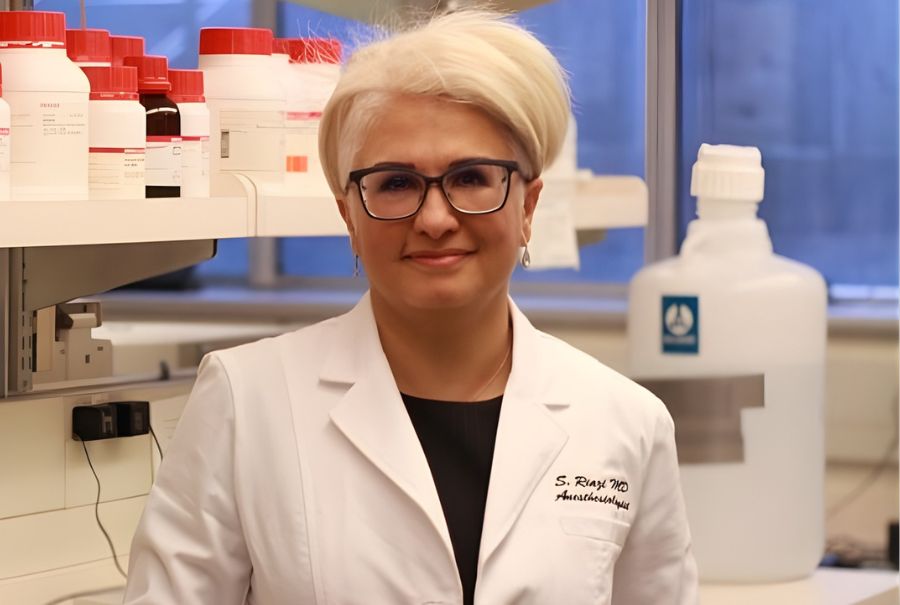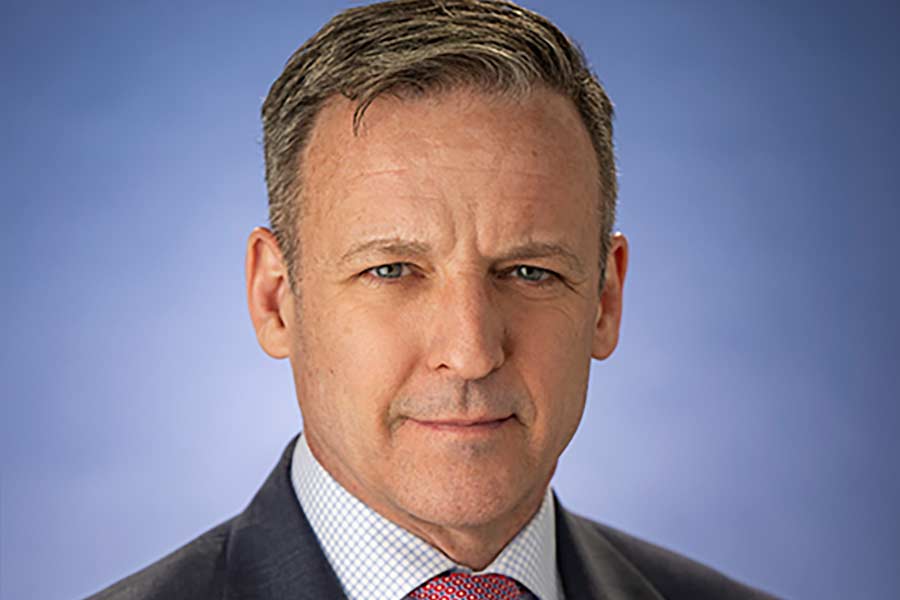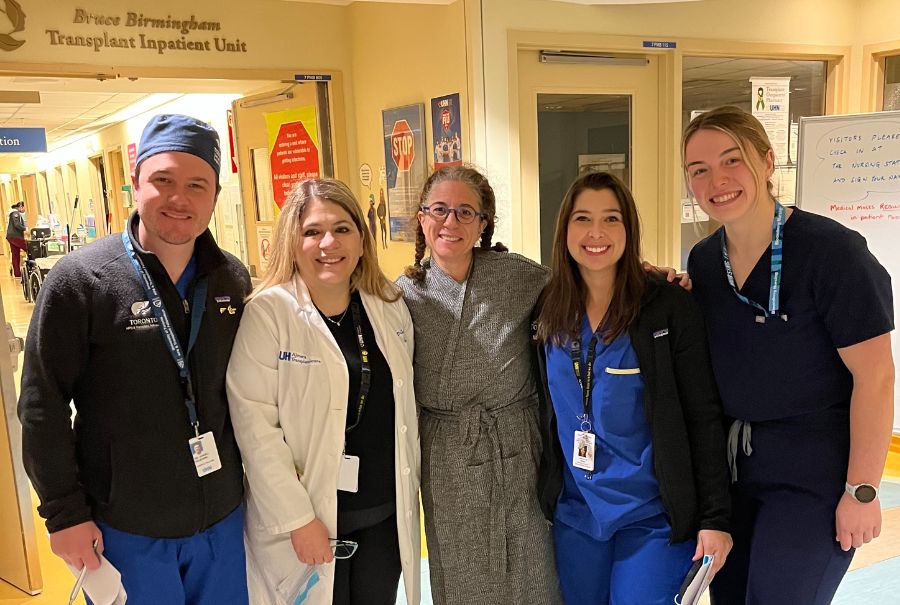Shortly before the COVID-19 pandemic broke, Dr. Hashim Khan, a clinical associate in the Division of Respirology at University Health Network, received a call from a fellow Canadian Muslim. This person was inquiring about the virus and the traction it was gaining, and the conversation sparked much of the work Dr. Khan has done in the last 13 months – work he continues to do for the foreseeable future.
“I already had some background information [when I received the call in March 2020]. I was contacted because I sit on the board of the Muslim Medical Association of Canada,” Dr. Khan says. “The concern was, what does this mean for the Canadian Muslim community?”
He knew if one Canadian Muslim was asking this question, then more were likely echoing it. Dr. Khan also knew quick action was needed, as it is customary for Muslims to visit mosques and worship in large groups – as many as 500 at a time, standing shoulder-to-shoulder every Friday and up to five times a day.
Without restrictions, such gatherings could easily result in COVID-19 outbreaks. Providing clarification on the transmission of the virus and measures one could take to reduce exposure among a previously identified and now confirmed at-risk group was necessary. The approaching Ramadan added a layer of urgency.
A one-month period of fasting that moves back by about 10 days every year, Ramadan calls on Muslims to revive their spirituality through self-reflection and increased worship, including praying in congregation at mosques.
In response, and alongside other health experts in the Muslim Medical Association of Canada, the Canadian Council of Imams and grassroots community members and organizations, Dr. Khan corralled a task force in March 2020. The aim was to engage with the government, public health and community members via an intersectional approach and provide timely, culturally sensitive information to Canadian Muslims.
“At the time, we were already seeing evidence of outbreaks in gatherings, including houses of worship – churches, mosques, temples and synagogues – around the world. It hadn’t happened yet in Canada, but we wanted to be proactive,” Dr. Khan says.
The task force called for the suspension of congregational prayers in advance of the first lockdown, and swiftly compiled contextualized guidelines and statements for distribution to Canadian Muslim spiritual leaders. It also introduced a mandatory masking policy and disinfection protocols, created culturally sensitive posters for mosques and developed a contact tracing strategy well before these became official public health requirements.
Celebrating Ramadan under COVID-19 restrictions – again
Ramadan 2021, beginning between April 12 and 14 this year, poses additional difficulties.
“Getting community members to follow guidance for an entire month with rapidly evolving recommendations is always going to be a challenge. Last year, it was somewhat easier. We’d say, ‘There’s a pandemic, it’s scary, people’s lives are at stake, stay home.’ The message was simpler,” Dr. Khan says.
“Now, we know there’s COVID fatigue, everyone’s mental health has been affected and despite the newly-announced stay-at-home order in Ontario, houses of worship are permitted to remain open with reduced capacity. This places an extra burden on mosques and community members to make difficult decisions about whether they should fulfill their religious obligations or listen to genuine public health concerns.”
Another challenge the task force will face again this year is engagement. Dr. Khan says there are more than one million people in the Canadian Muslim community, including those in the African, Middle Eastern, East Asian and South Asian communities, among others. They have different cultures and understandings of health, speak different languages and reside in different areas across the country, which he says makes connecting with every group tough.
To continue improving their ties with underrepresented and marginalized communities, Dr. Khan’s team has recently been working with community-based COVID-19 task forces and public health departments in British Columbia, Alberta, Manitoba and Quebec.
Further, mosques in Canada operate independently – there is not one governing body that can lay down a broad-sweeping rulebook. This underscores the importance of meaningful communication, one area the task force is focusing on with input from partner organizations around the world. Dr. Khan says the Canadian task force has connected with similar networks in the U.S., the U.K., Australia and South Africa to exchange resources and tips on overcoming obstacles.
Combatting vaccine hesitancy
Aside from preparing for Ramadan and advising Canadian Muslims on how to observe it safely, Dr. Khan says a recent priority has been delivering guidance around COVID-19 immunization.
“Our goal has always been to take rapidly evolving information and disseminate it directly to communities in a culturally sensitive way. That has now expanded into vaccines,” he says. “As of December, we’ve been releasing different materials in five or six languages. We knew vaccine hesitancy was going to be a concern. We wanted to address it and make sure everyone was prepared well in advance.”
Working on materials with spiritual leaders has enhanced interest. So, too, has hosting virtual town halls where an open discussion about immunization is had with health experts, religious leaders and community members in six languages.
Dr. Khan says the task force tested the value of these town halls through polls – attendees rated their desire to receive a shot before and after the Zoom sessions. They found that participants were dramatically more inclined to receive the COVID-19 vaccine after hearing from experts with whom they could identify. As a result, the recordings have been shared on social media for wider consumption.
Eyeing the road ahead, Dr. Khan says there are lessons to take away from this health crisis.
“I’m hopeful decision-makers understand the need for a comprehensive community-based strategy. Instead of a top-down approach, community needs and issues should be identified early through meaningful stakeholder engagement and representation at the decision-making table. When new measures are decided upon, they need to be communicated with as much notice as possible so communities have time to prepare,” he says.
“I’m also hopeful a lot of this collaborative work – new connections and relationships between professionals, industry, organizations and communities – continues beyond the pandemic.”


